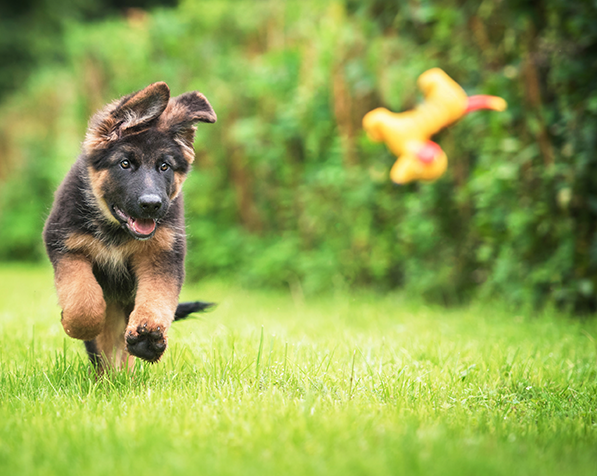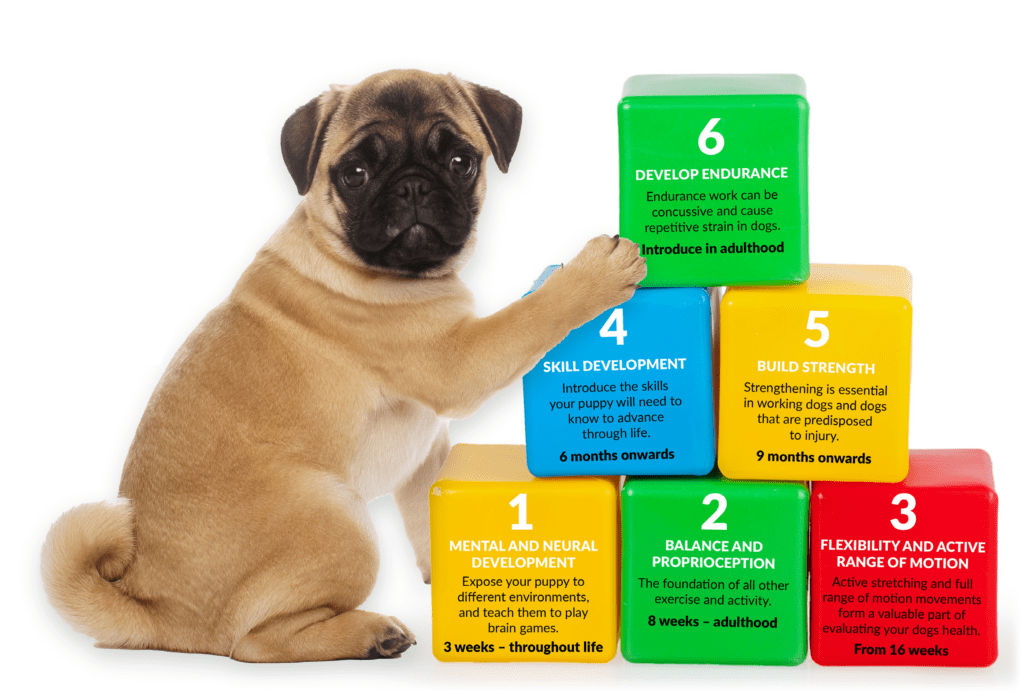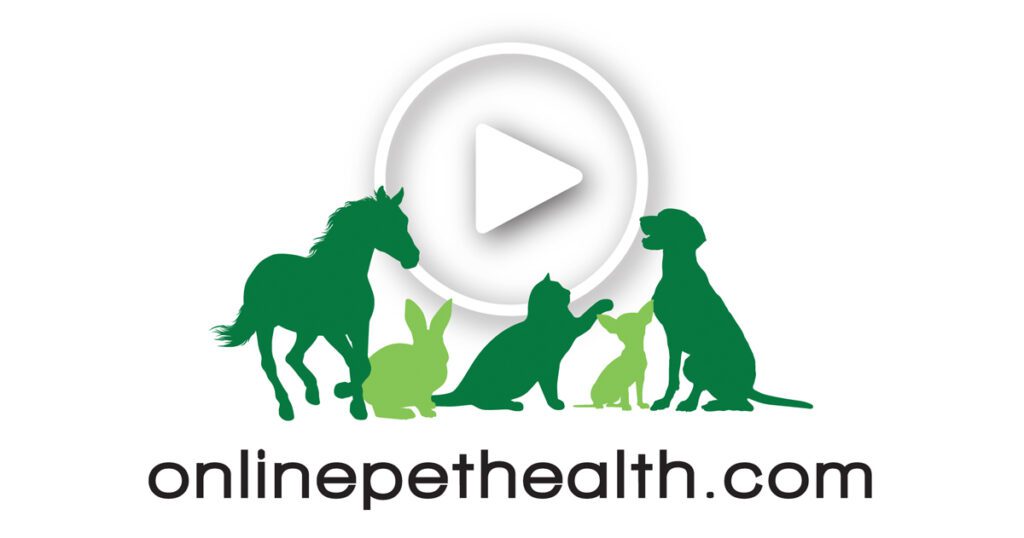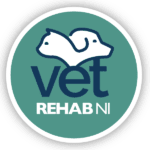Puppy Exercise Considerations
From a Vetrehabber’s Perspective
As puppies grow and develop, we want to ensure that we stimulate their minds and bodies at the appropriate times, and in the appropriate amounts, to ensure optimal development and adult performance. We also want to minimise the risk of injury and the development of degenerative orthopaedic conditions in the growing or adult dog.
Let’s discuss a few considerations and guidelines that we need to consider for our puppies.

General guidelines
For puppies of any age, we want to follow a few general guidelines or rules of thumb as we consider the exercises we advise or prescribe.
- Avoid repetitive strain exercises.
- Exercise during cooler times of the day to avoid overheating.
- Watch your puppy for signs of fatigue during and after exercise, and adjust their exercise appropriately. Puppy Exercise Considerations From a Vetrehabber’s Perspective As puppies grow and develop, we want to ensure that we stimulate their minds and bodies at the appropriate times, and in the appropriate amounts, to ensure optimal development and adult performance. We also want to minimise the risk of injury and the development of degenerative orthopaedic conditions in the growing or adult dog.
As Vetrehabbers, we want to set our puppy patients up for success throughout their lives. We don’t want only to optimise potential performance; we also want to prevent or minimise the risk of them developing degenerative conditions such as elbow dysplasia, hip dysplasia or arthritis. For these reasons, we may want to add a few cautionary points for our clients.
Just because your puppy can, does not mean they should
Avoid high-impact activities such as jumping in and out of vehicles, beds or high surfaces. Teach dogs from a young age to perform these activities with restraint and caution, or with support from the owner. We also want to caution against navigating stairs from too early an age, as this can place repetitive strain on the elbows. Encourage clients to ensure restraint in their puppy as it engages in certain activities, and to support the young dog as it navigates obstacles.
Just because your puppy has endless amounts of energy, does not mean they can handle endless activity
Young dogs doubtless have an abundance of energy, and it can be tempting to take them out and ‘walk it off’, or to play repetitive games of fetch with them in the garden. This can, however, cause repetitive strain injuries and predispose puppies to orthopaedic conditions or arthritis later in life. For a pup with endless energy, find activities that engage their minds more than their bodies to effectively and safely empty their energy batteries.
Provide ample environmental stimulation
By focusing on their environments, we can help puppies to develop their minds and bodies. Provide a safe, quiet and non-stimulating area for them to ‘switch off’ and rest. Provide areas where they can develop their sense of smell, and other areas where they can develop their proprioception. Provide them with different surfaces to walk on, expose them to different sounds and different stimuli through their environment. Just as with children, we don’t want to overload their sense and overstimulate them constantly. Vary the environmental stimulus and always make sure there is time and space for them to switch off again.
Know your breed
Each breed has specific characteristics, talents and needs, as well as health concerns, that should be taken into consideration as you discuss and plan appropriate activities for them. For example, border collies have ample physical and mental energy, and love to learn. They can also be reckless with their bodies as they grow older and develop greater speed and drive. Focusing on engaging their minds and increasing their awareness of their bodies at a young age can help us to ‘protect’ them from injury as their drive and speed develop. In large-breed dogs such as German shephards which are predisposed to hip dysplasia and also havean extremely high drive, we want to do the same thing as with collies, but with a greater focus on their hindquarters. Initially we want to build proprioceptive awareness, and as they grow we want to ensure we strengthen the muscles of the hindquarters. We might also substitute some of their walking time for swimming time to reduce the impact on joints, while building strength in the water. Each breed will have similar considerations – think about the strengths and weaknesses of the breed, and aim to work on both in a gentle and systematic way as they age.
On-lead vs off-lead work
In young pups, leash training is an extremely important skill to develop for all the obvious reasons. It is not, however, the best way to provide them with exercise. Wherever possible, when we take them for exploratory walks, they should be off-lead. If this is not possible, we can use a longer lead that will allow them to explore freely at their own pace in a radius around us. In such cases, try to inhibit their movement as little as possible, and allow them to set their own pace – a pace guided by their noses and the environment around them. If your pup is on-lead with you, and you need to keep them close to you, try to engage their minds as much as you can with changes in pace, changes in direction, asking them for sits and ‘downs’, etc. This can help add brain activity to a walk in an environment that they can’t safely explore.
The closure of growth plates
It is essential for us to know when the growth plates of growing pups close, especially those which will engage in working or sporting activities, as such knowledge will help guide the progression of their exercise and training programmes. While growth plates are open, we should avoid any high-impact, repeptitve activities that may increase their risk of developing orthopaedic disease. These include jumping on and off of furniture, in and out of vehicles, games such as fetch, and running activites – especially on hard ground such as roads or pavement.
The growth plates of intact dogs usually close by 14 months of age. In neutered or spayed dogs, this closure takes much longer– anything from 18 to 22 months. In sporting or working dogs, it is recommended that we check for growth plate closure via X-rays before we start training them for their specific work or sport.
The areas to develop
As puppies grow, we want to slowly layer our exercise and stimulation according to their development and ability, so that we first build a strong foundation in their minds and bodies, then add to that foundation as they grow.
These are the areas we really want to focus on:
- Mental and neural development
- Balance and proprioception
- Flexibility and active range of motion
- Skills development
- Strength development
- Endurance development


Mental and neural development
Mental and neural development is incorporated into many of the foundational exercises, such as balance and proprioceptive training, the development of skills and social interaction. During these activities, be sure to encourage the active participation of puppies as much as possible – you want them to engage in exercise independently as their own idea, or very actively with you. You don’t want to be baiting or holding puppies in an exercise, as this has limited value for their minds and neurological systems. When they are actively and consciously performing activities, they are engaging their minds and training their neurological system. Another way to achieve engagement of the mind and conscious participation is to slow down an activity. The slower and more consciously the pup moves, the more aware they can be of each part of their bodies. There are also many specific brain games and activities we can get or make for our puppies. These games are one of the ways in which we can teach our pups the important skill of learning. Below are some simple ideas.
Activities to consider:
• Snuffle mats
• Slow feeders
• Licky mats
• Kongs or other food dispensing toys
• Hide and seek

Balance and proprioception
Balance and proprioceptive work forms the foundation for all other exercise and activity in our puppies’ lives. We can start to stimulate their balance and proprioception from an early age, and continue to develop these areas by advancing exercises into adulthood. During the early sensitive period from 3 to 7 weeks, we can introduce puppies to different surfaces and uneven surfaces, as well as gently handling all areas of their bodies. As they enter the late sensitive period from 8 to 16 weeks, we can expose them to a few pieces of equipment such as unstable surfaces, changes in surface height, and changes in their footing. Social skills are very important in this period, and allowing them to interact with other dogs, animals and humans is essential. Introducing them to activities in the water is invaluable to their proprioceptive development. In the late sensitive period we can introduce them to walking in shallow water for five minutes at a time, and increase this time as they age, with 10-15 minutes in the water by the time they are six months old, while still avoiding building endurance or strength. In dogs that have a higher risk of developing orthopedic injuries, we want to spend a little more time in the water as they age compared to the time we spend on land.
Activities to consider:
From 8-16 weeks:
• Expose puppies to different ground surfaces – grass, gravel, pavement, yoga mats, sand, carpet, etc.
• Provide tactile stimulation through touch and grooming
• Explorative walks for 15-30 minutes
• Introduce walking in water
From 17 weeks to 6 months:
• Backing up over an obstacle, or over changes in surface
• Walk over disorganised cavalleti rails or pick-up sticks
• Walk over poles on the ground
• Walk along a plank or a narrow surface
• Use body wraps during walks to increase body awareness
• Go on exploratory walks, building up to 60 minutes
• Walk and swim in water for five to ten minutes at a time.
As the puppies move towards and enter young adulthood, we can continue to advance and challenge their proprioceptive systems in different ways, building on the foundation we have laid.

Flexibility and active range of motion
It can be extremely valuable to teach our pups how to actively stretch, and to allow us to take their limbs into stretched positions. This allows owners an easy way to build and encourage movement in a good, active range of motion which can help prevent compensatory movement patterns and act as a protection against injury. Owners will also be able to use these exercises to evaluate their puppies movement as they age, making it easier for them to identify the early signs of pain or injury. In addition, these exercises form a valuable part of the warm-up and cool-down routine of dogs engaging in sports or work activities.
Activities to consider:
From 8-16 weeks:
• Teach your dog how to go into a play bow, as well as a cat stretch with the head between the limbs and the back arched.
From 16 weeks to 6 months:
• Add lateral stretches to your pups routine, by asking for a stretch to each shoulder, and later to each hip.
• Stretch the hips and back with the forelimbs raised on a step or over a pilates ball.
• Stretch the shoulders, back and neck with the hindlimbs raised on a step.
From six months:
• Introduce passive stretches, where the owner gently stretchesthe forelimbs and the hindlimbs individually.

The development of skills
When we consider skills training and development, we want to focus first on the skills every dog needs to navigate their world and lives successfully, and then on the specific skills a dog may need to compete in a specific sport, such as agility, or to perform a specific kind of work, such as tracking. Every dog in every environment needs a few specific skills to successfully navigate their families, their environments, and the activities their families love to engage in. We need to make use of the puppy phases to ensure that we teach puppies, firstly, how to learn and problem solve; secondly, how to behave well in society and with other dogs; and thirdly, how to be successful at their particular jobs.
Activities to consider:
From 8-16 weeks:
• Teach your puppy how to learn and how to solve simple problems.
• Play with other puppies and with people.
• Expose pup to new environments.
• Start teaching leash walking and basic obedience such as sit, down and recall.
From 17 weeks to 6 months:
• Continue to develop basic obedience skills, including leash walking, sit, down, stay and recall.
• Expand obedience skills into new environments.
• Start introducing work or sport-specific activities, such as retrieving, tracking, agility ground work, etc.
From six months until the growth plates close:
• Advance obedience training, and consider getting a Canine Good Citizen certification.
• Any jump training can be introduced at low heights and in moderation.
• Specific work or sport skills can be developed in short intervals, increasing the time of training as the pup builds strength.
Once the growth plates are closed:
• Repetitive activities can now be introduced, including running, jumping, weave poles, etc.
• Continue to increase the stress placed on the body gradually.

Building strength
Building strength is an important consideration in any work or sporting dog, as well as dogs that are at a high risk of developing orthopaedic conditions such as arthritis. However, we want to start introducing strengthening exercises only once the dog is older than six months, and has developed the skeletal system to support the beginnings of strengthening. We want to build strength in dogs that will support their weaknesses, facilitate their sport or work, and protect them from injury. Teach strengthening exercises slowly, aiming for the dog to ‘master’ a strengthening exercise only once they reach adulthood.
Activities to consider:
Strengthen the hindquarters
• Target an object with a hindpaw, and practise targeting straight back and to the side.
• Raise the forelimbs on a step or block, and later on a pilates ball (increase height gradually).
Teach the pup to step back, foreward and sideways with the forelimbs raised.
• Walking backwards over different surfaces, over a pole or up a step.
Strengthen the forequarters
• Teach the pup to give paw and later to wave, or to target with the forepaws.
• Raise the hindlimbs onto a step, and teach pup to step forewards, backwards and sideways with the forelimbs on the ground (increase height gradually).
• Handstands.
Strengthen the whole body
• Walking over raised poles.
• Postural transitions such as stand to sit, sit to down, down to stand, stand to down.
• Add some speed to a transition – from a sit stay to a fast recall, or a down stay to a fast recall.
• Swimming activities

Developing endurance
Endurace can be worked on once dogs reach adulthood, and have a strong foundation of proprioception, flexibility and strength to build on. Endurance work can often have a concussive or repetitive strain component, and we want to slowly build their ability to cope with these forces. The specific goals of endurance training need to be considered as you develop a training programme to suit the individual dog, as well as their sport or work needs. The endurance capacity of an agility dog will be very different from the endurance training of a search and rescue dog, for example. Cardiovascular endurance, along with muscular endurance, can be built through activities such as running or swimming. Endurance in a specific task or activity can be built by performing that activity for longer durations, at lower intensities. For example, an agility dog’s jumping endurance might be built by incorporating longer duration runs over low jump heights, with wide turns, and few or short breaks between repetitions. Jump grids might be added to this kind of endurance training session. For search and rescue dogs, tracking exercises might be set over longer distances and over easy terrain to work on their tracking endurance.
Conclusion

These first months in a puppy’s life provide us with the opportunity to lay a foundation that will serve them throughout their lives, in their homes, their environments and in their work or sport.
Good foundations are key to happy and healthy adulthoods – so worth doing right.
content supplied by online pet health
